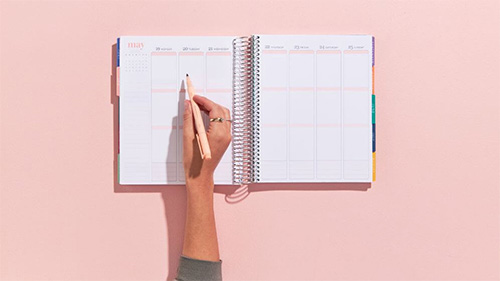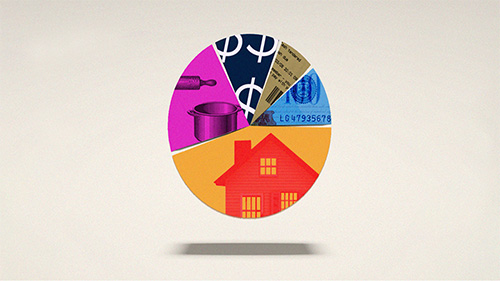The Benefits of Using a Vertical Planner

In today's fast-paced world, staying organized is crucial for managing both personal and professional matters. A popular and effective tool among planners is the vertical planner. This layout offers a unique approach to scheduling that suits a variety of organizational styles and preferences.
A vertical planner is a popular organizational tool that arranges the days of the week in columns, typically spanning two pages. Each day is represented by a vertical box, allowing users to allocate space for specific tasks, appointments, or notes. This layout provides a clear overview of the week, making daily activities easier to visualize and manage.
A vertical layout is particularly well-suited for those who prefer to organize their schedules by time or specific categories, such as work, personal, and errands. This flexible and customizable structure allows users to tailor their schedules to their unique needs and preferences.
Benefits of Using a Vertical Planner
1. Define Your Organizational System
The versatility of a vertical layout allows you to customize it to your needs. Common approaches include dividing each day into categories such as work, personal, and errands, or by time periods, such as morning, afternoon, and evening. For example, one user divides their planner into three sections: work, home, and self-care, and finds this approach effective for managing all aspects of their life.
2. Utilize Color Coding
Incorporating color can enhance clarity and organization. Assign specific colors to different categories or individuals. For example, blue for work, green for home, and yellow for personal tasks. This approach helps quickly identify and differentiate between activities.
3. Embrace Flexibility
A major advantage of vertical planners is their adaptability. You have the freedom to experiment with different layouts and structures until you find the one that works best for you. The open-ended design allows for creative expression, such as adding stickers, doodles, or inspirational quotes, making planning both practical and fun.
4. Integrate Habit and Goal Tracking
Use the horizontal section of your planner to set and monitor goals and habits. Create a habit tracker to visually visualize your progress and break down larger goals into manageable steps. This practice not only helps you stay on track but also gives you a sense of accomplishment when you see progress over time.
5. Plan Ahead
Use a vertical layout to plan not only for the current week but also for the weeks ahead. Setting aside sections for future events, appointments, or tasks allows you to prepare ahead of time and reduce last-minute stress. This proactive approach ensures you stay on track with your commitments.
A vertical planner is more than just a scheduling tool; it's a versatile companion that adapts to your organizational style. Whether you're managing a busy workweek, planning meals, or tracking habits, a vertical layout provides a structured yet flexible approach to planning. Adopting this approach can lead to better organization, increased productivity, and a more balanced lifestyle.
Recommended for you



